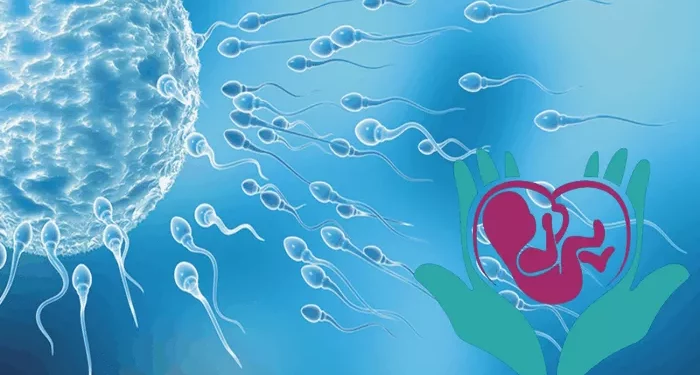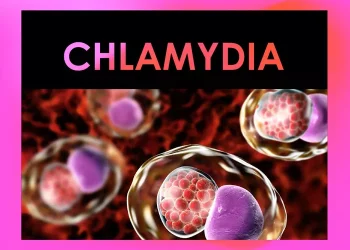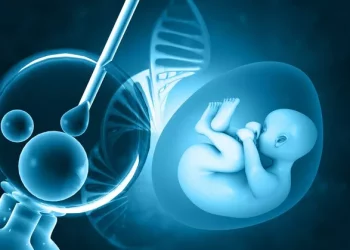Fertility is a complex and fascinating aspect of human biology, essential for the continuation of the species. For individuals and couples hoping to conceive, understanding the intricacies of the menstrual cycle is paramount. The menstrual cycle, typically lasting around 28 days, plays a crucial role in determining a woman’s fertile window – the period when conception is most likely to occur. At the heart of this cycle lies ovulation, the release of an egg from the ovary, which marks the peak of fertility.
Understanding the Menstrual Cycle
The menstrual cycle is divided into several phases, each characterized by distinct hormonal changes and physiological events:
1. Menstruation: The cycle begins with menstruation, where the uterine lining sheds in the absence of pregnancy. This phase typically lasts 3 to 7 days.
2. Follicular Phase: Following menstruation, the body enters the follicular phase. During this stage, follicle-stimulating hormone (FSH) stimulates the growth of ovarian follicles, each containing an immature egg.
3. Ovulation: Ovulation is the pivotal moment in the menstrual cycle when a mature egg is released from the dominant ovarian follicle. This usually occurs around the middle of the cycle, approximately 14 days before the start of the next menstrual period.
4. Luteal Phase: After ovulation, the ruptured follicle transforms into the corpus luteum, which produces progesterone to prepare the uterus for potential implantation of a fertilized egg. The luteal phase typically lasts 10 to 16 days.
Identifying Ovulation
Ovulation is central to fertility, as it is the prime time for conception. Recognizing the signs of ovulation can aid couples in timing intercourse for optimal chances of pregnancy. Common signs of ovulation include:
1. Changes in Basal Body Temperature (BBT): A slight increase in basal body temperature occurs after ovulation due to the release of progesterone. Tracking BBT with a basal thermometer can help pinpoint ovulation retrospectively.
2. Cervical Mucus Consistency: Around ovulation, cervical mucus becomes clear, slippery, and stretchy, resembling raw egg whites. This fertile cervical mucus facilitates sperm transport and survival in the reproductive tract.
3. Ovulation Predictor Kits: Over-the-counter ovulation predictor kits detect the surge in luteinizing hormone (LH) that precedes ovulation. A positive result indicates that ovulation is likely to occur within the next 24 to 36 hours.
Timing of Ovulation
While the average menstrual cycle is 28 days, individual variations are common. Consequently, the timing of ovulation can vary from one cycle to another and between individuals. For women with regular 28-day cycles, ovulation typically occurs around day 14. However, for those with shorter or longer cycles, ovulation may occur earlier or later.
Fertile Window
The fertile window encompasses the days in the menstrual cycle when conception is most likely to happen. It includes the days leading up to ovulation and the day of ovulation itself. Sperm can survive in the female reproductive tract for up to five days, while the egg remains viable for about 24 hours after ovulation. Thus, the fertile window typically spans a total of six days, providing a timeframe for intercourse to result in pregnancy.
Calculating Fertility
Determining the fertile window requires knowledge of the menstrual cycle length. Methods for calculating fertility include:
1. Tracking Cycle Length: Keeping a record of menstrual cycles over several months can help identify patterns and predict ovulation. The fertile window is estimated by subtracting 14 days from the length of the shortest cycle in the past six months.
2. Using Ovulation Prediction Tools: Online fertility calculators and smartphone apps are available to estimate ovulation based on menstrual cycle data. These tools utilize algorithms to predict fertile days and provide personalized insights.
3. Monitoring Fertility Signs: Observing changes in cervical mucus, tracking basal body temperature, and using ovulation predictor kits are valuable methods for detecting ovulation and determining the fertile window.
Factors Affecting Fertility
Various factors can influence fertility and the timing of ovulation, including:
1. Stress: High levels of stress can disrupt hormonal balance and interfere with ovulation. Stress management techniques such as mindfulness, yoga, and deep breathing exercises may help mitigate its impact on fertility.
2. Hormonal Imbalances: Irregularities in hormone levels, such as polycystic ovary syndrome (PCOS) or thyroid disorders, can affect ovulation. Seeking medical evaluation and treatment for hormonal imbalances is crucial for optimizing fertility.
3. Age: Female fertility declines with age, particularly after the age of 35, due to a decrease in the number and quality of eggs. It is essential for women to be aware of their reproductive timeline and consider fertility preservation options if planning pregnancy later in life.
4. Underlying Health Conditions: Conditions such as endometriosis, pelvic inflammatory disease (PID), and obesity can impact fertility. Addressing underlying health issues through medical intervention and lifestyle modifications may improve reproductive outcomes.
Tips for Increasing Fertility
For couples striving to conceive, adopting healthy lifestyle practices and seeking appropriate medical care can enhance fertility:
1. Maintain a Healthy Lifestyle: A balanced diet, regular exercise, adequate sleep, and avoidance of harmful substances such as tobacco and excessive alcohol can promote overall health and fertility.
2. Manage Stress: Incorporating stress-reducing activities into daily life, such as meditation, massage, or engaging in hobbies, can help alleviate stress and support reproductive health.
3. Seek Medical Advice: If conception does not occur after a year of trying (or six months for women over 35), consulting a healthcare provider specializing in fertility is recommended. Fertility testing can identify underlying issues and guide treatment options, including assisted reproductive technologies (ART).
Conclusion
Understanding the menstrual cycle and recognizing the signs of ovulation are fundamental steps in optimizing fertility and increasing the likelihood of conception. By identifying the fertile window and timing intercourse accordingly, couples can enhance their chances of achieving pregnancy. Additionally, addressing factors that influence fertility, maintaining a healthy lifestyle, and seeking medical guidance when needed can support reproductive health and well-being.
Related Topics:
10 Ways to Boost Male Fertility and Increase Sperm Count



























